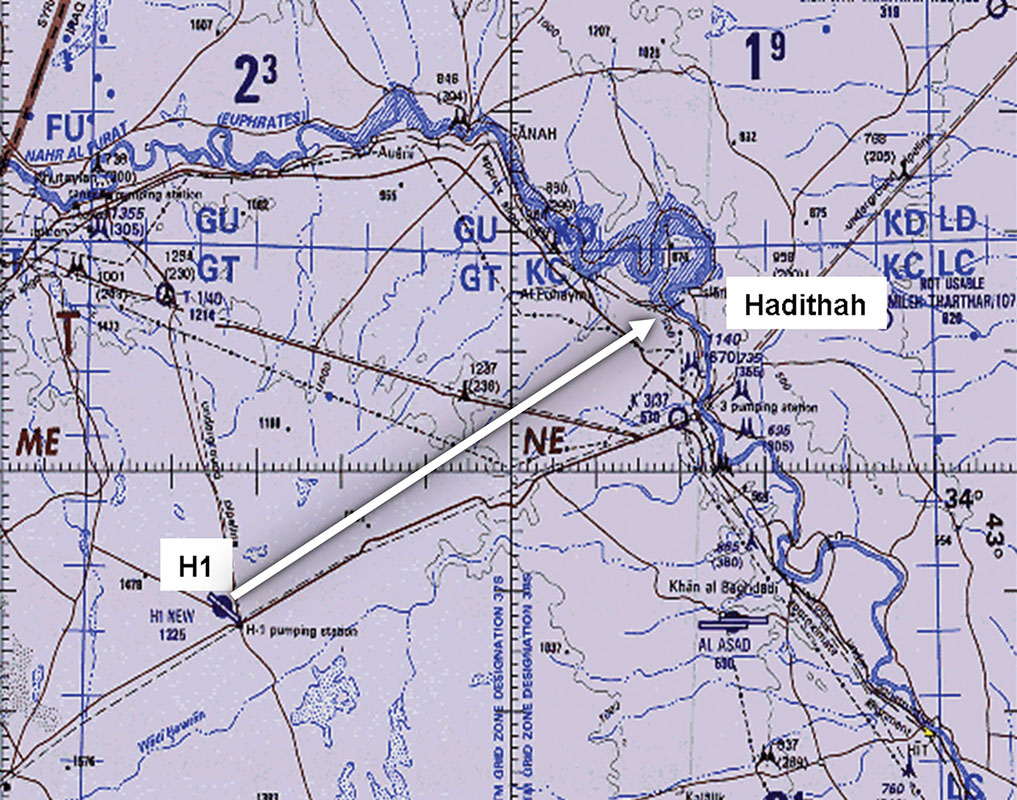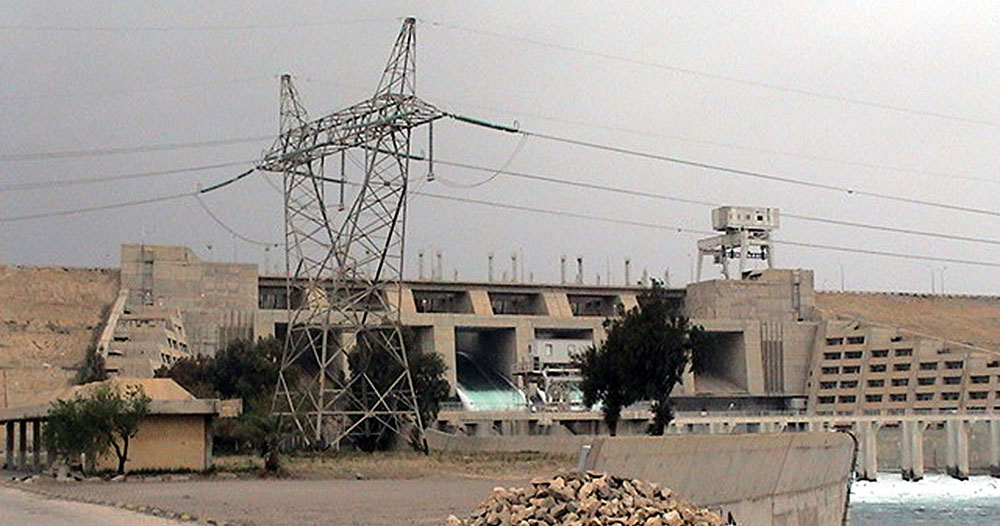DOWNLOAD
The aviators of Company B, 1st Battalion, 160th Special Operations Aviation Regiment (SOAR) have an established reputation for being able to deliver close air support in even the most challenging conditions. The Night Stalkers lived up to and exceeded all expectations while supporting the 75th Ranger Regiment’s assault on Hadithah Dam the morning of 1 April 2003. Through well established operating procedures, the SOAR attack pilots demonstrated their value and flexibility on the battlefield.

Chief Warrant Officer 4 (CW4) Daniel Carter (pseudonym), his team, and their two AH-6 Little Bird attack helicopters were marking time at a dusty airfield in west-central Iraq when they received word of the mission. Having arrived at H1 five days earlier on an ostensibly overnight mission, the team looked and felt scruffy. Carter and the rest of the team were awaiting their replacements when they received the mission to support the Rangers’ occupation of Hadithah Dam. Only knowing part of the Rangers’ attack plan, the SOAR crews loaded their helicopters with munitions appropriate for ground support and took off.1
Carter’s team arrived at the Rangers’ assembly site on the afternoon of 31 March 2003. Captain (CPT) David Doyle greeted Carter and briefed him on the Rangers’ tactical plan. The two commanders had known each other for years, and had worked together during training exercises and deployments. Together, they devised a fire support plan based on their collective experiences and standard operating procedures. With the Rangers’ graphic control measures—route, checkpoints, phase lines, and assault positions—annotated on a map, Carter traveled back to the landing site to brief his team.
Fully expecting to execute the plan that he had developed with Doyle, Carter was dismayed when events soon orchestrated a different fate. After several delays, the Rangers ultimately launched at 2240 hours, two hours later than planned. Darkness soon enveloped the Ranger formation, and the terrain slowed the advance. The attack was further delayed when the steering gearbox failed on one of the Ground Mobility Vehicles. Resourceful mechanics had the gearbox repaired within thirty minutes, but the delay forced the Little Bird pilots to divert to a concealed forward arming and refueling point (FARP) for gas.

As Carter’s AH-6 team provided aerial reconnaissance to the Rangers traveling toward Hadithah, another AH-6 attack team arrived at H1 airfield. Having conducted the first ever hot off-load of AH-6s from a C-17 Globemaster (meaning that the helicopters and pilots were headed directly into combat), CW4 Michael Weddington and his flight of two AH-6 gunships quickly departed from H1. Racing toward the dam, Weddington contacted Carter with his SATCOM radio and coordinated a rendezvous en route. The team met at a hidden FARP, approximately twelve kilometers west of the dam. Carter hastily conducted a battle handover to Weddington, handing to him the map with the Rangers’ graphics, and providing him with the pertinent details of the assault; most were standing operating procedures.2
After the handover was completed, each flight swiftly departed in opposite directions. CW4 Greg Coker contacted the Ranger Fire Support noncommissioned officer, Sergeant First Class (SFC) Steve Morris, for a situational report. Morris relayed the Rangers’ current position, and within minutes the Night Stalker flight closed on the convoy as it reached the outer perimeter of the dam.3
From the SOAR pilots’ perspective, the Rangers appeared to take the dam uncontested. The Night Stalkers flew south and reconnoitered the surrounding area as enemy forces fired sporadically at the nearly invisible helicopters. CW3 Dino Sorter (pseudonym), in the trail Little Bird, spotted a vehicle rapidly approaching from the south with its lights shining. He relayed the information to Weddington in lead, and Weddington swung his flight around for a closer look. Unsure of the intent of the occupants, the pilots waited until the combatants exited their vehicle with RPGs and rifles. In response to this obvious display of hostile intent, Weddington launched a salvo of .50 caliber bullets into the party. Sorter followed immediately with another barrage, eliminating the threat.4

On the return flight north to the dam, the SOAR pilots noticed an equally deadly enemy. The massive spider web of wires and power poles emanating from the dam posed a formidable threat. As dangerous as any enemy fire, the nearly invisible high tension wires could easily snare and destroy a helicopter. The wires were a constant reminder to maintain gun run discipline, check altitude, and not to fixate on a target.
As the enemy moved through the bottomland up the west side of the river, fifteen to twenty-foot dunes obscured its movement. The Iraqis moved into the defilade and shot at the Rangers, but the Rangers could not see them to accurately return fire. However, the Little Bird pilots could easily survey the area, and killed several fighters with 7.62mm minigun rounds and 2.75 inch rockets. After a half dozen fire missions, Coker notified Morris that they needed to return to H1 for fuel. As the flight departed the area, the pilots listened to the reports of increased enemy activity. During the nineteen minute flight to H1, mortar attacks from the south intensified.
While refueling at the FARP, Coker tuned the SATCOM radio to monitor the Ranger command net and heard an agitated, familiar voice. SFC Morris was contacting the Ranger Tactical Operations Center (TOC) and requesting the status of the Little Birds. Coker could tell by the tone of his voice that something was wrong. As the Night Stalkers repositioned for departure, Morris called the TOC again, requesting the time inbound for the Little Birds. Coker alerted Weddington, who selected the SAT radio on his communication console, and the flight departed. Weddington radioed Morris when the flight was six minutes away. Gun fire echoed in the background.
Approximately a mile away from the objective, the Night Stalkers watched gunfire crisscrossing on the western side of the dam. 1st Platoon was fiercely engaged to its south with the same enemy fighters that the aviators had observed maneuvering through the rolling dunes along the Rangers’ western flank. The pilots saw tracers and flashes from the Rangers’ heavy weapons: MK19 40mm grenade machine guns and M2 .50 caliber machine guns. As Coker looked southward, two mortar tubes flashed 200 meters away. He radioed Morris and gave a situation report. Morris passed him over to the Ranger controlling fires in 1st Platoon’s sector.
Suddenly, two more flashes were spotted in the same location, as well as a massing enemy force. Weddington contacted the forward observer (FO) and requested clearance to shoot. The FO began a full call-for-fire request, which is thoroughly drilled into even the greenest Rangers. Radio chatter filled the communication channels, forcing both Coker and Weddington to broadcast on all radio nets that they “had the Rangers’ positions and needed clearance to shoot.” Finally, Morris yelled into the radio, “Damn it, cleared hot! Cleared hot! Cleared hot!” The Little Bird pilots got the message.
The Night Stalkers separated laterally from the Rangers, and quickly rolled in on the first mortar position, delivering .50 caliber rounds and rockets into the mortar position. As Sorter’s gunship discharged its rockets, the pilots in each helicopter saw muzzle flashes everywhere they looked. “Quite a sight to behold,” commented Coker; “I’ve never seen so many muzzle flashes in my life.” Five Iraqis ran into a nearby building, so the Little Birds came around for a second run and leveled the building. As the dust rose from the attack, the adept pilots divided their attention between their human and environmental adversaries, ever cognizant of the wire-ridden death trap above the mortar positions. At the second mortar position, an adjacent natural gas main erupted from the rocket effects, and burned for nearly a week. At night it could be seen from seventy miles away and served as a beacon for incoming flights.
A sizeable force began to attack the Rangers from the south. Coker identified an element maneuvering along the shoreline. Within minutes, the pair of attack helicopters fired on at least two platoons of dismounted troops. As one pilot flew each helicopter, the other pilots got into the fight by leaning out the side door and engaging militia forces with their personal M4 rifles. The smell of cordite filled the air and as the Night Stalkers flew low during their attack runs, they could even hear the bolt action of the enemy’ AK-47s.
When the battle intensified, the Night Stalkers were there to deliver the precise close air support that the Rangers needed, staying on station even as the morning sun stripped away the protection afforded by the night.
The enemy force was finally suppressed just as dawn broke. With daylight comes increased probability of small arms fire hitting a helicopter, so CPT Doyle soon ordered the Little Birds to leave. As the flight departed, SFC Morris radioed the AH-6 pilots and, with appreciation evident in his voice, declared, “The beer’s on us!”
The 160th SOAR pilots supported the Rangers with the ferocity that the ground fighters had come to expect. The expertise garnered through joint exercises and proven procedures enabled one team of Night Stalkers to flawlessly complete the mission began by another team. When the battle intensified, the Night Stalkers were there to deliver the precise close air support that the Rangers needed, staying on station even as the morning sun stripped away the protection afforded by the night. Years of bilateral training forged a mutual respect between these elite units, and had produced a generous return on investment with the successful seizure of Hadithah Dam.
